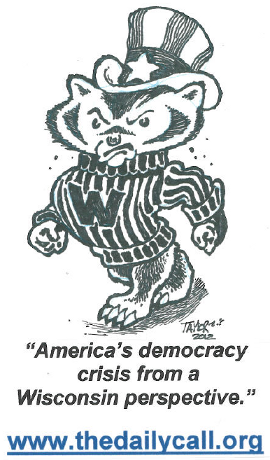By Valerie Schloredt
Yes! Magazine (3/16/16)
A great swath of primeval forest runs 250 miles up the coast of British Columbia, from the northern tip of Vancouver Island to the southern tip of Alaska. The area includes a rare and endangered ecosystem of cedars, spruce, and Douglas fir, a habitat for salmon, wolves, cougars, grizzlies, and the rare white Spirit Bear. It is also home, livelihood, and sacred place to 27 First Nations, the indigenous people whose ancestors have lived there for 10,000 years.
This is the Great Bear Rainforest (GBR), recently protected under what has been widely hailed by environmentalists as a model agreement to conserve 85 percent of old growth in the world’s largest intact temperate rainforest.
It has taken 20 years, intensely dedicated work, and worldwide support to forge the agreement, an impressive achievement that looked highly unlikely when efforts to save the GBR began in the mid-1990s. Back then, less than 10 percent of the rainforest was protected from logging, and it was common practice to saw magnificent cedars into decking planks, and pulp ancient timber for newsprint.
Jody Holmes of the Rainforest Solutions Project is a scientist by training who spent much of the past 20 years at the table negotiating for the protection of Great Bear. Lately, she’s been reflecting on the many changes that contributed to reaching the final agreement, and why it took two decades.
“It took quite a long time—even with environmentalists creating big splashy stories in the New York Times and elsewhere—to wake people up to the fact that there was a global treasure here,” she says. But bringing environmental groups, forest industry companies, 27 First Nations and the government to a land-use agreement that would allow a logging industry while protecting enough old growth forest on 6.4 million hectares of land was no simple task.
The market campaign
The process started in 1993 with efforts to save old growth forest on Vancouver Island’s Clayoquot Sound—soon to be dubbed the “War in the Woods.” Environmentalists and members of First Nations chained themselves to bulldozers and blocked roads in an effort to stop logging of a unique and pristine ecosystem. The protests and direct actions resulted in a record number of arrests and generated media images that caught the world’s attention, but the logging industry attempted to carry on as usual. There appeared to be no areas for compromise.
When conservation efforts moved on to Great Bear in 1995, the conflict between loggers and environmentalists seemed ready to boil over. Then Greenpeace launched a worldwide campaign to boycott products made from GBR old-growth timber.
“It became controversial to invest in companies operating in the Great Bear or to buy products coming out of it,” says Eduardo Sousa, a forest campaigner for Greenpeace, “to the degree that $600 million worth of paper contracts with a German publishing company were almost cancelled. Because the companies themselves were global, the issue and campaign went global, and everything escalated up a few notches.”
Under pressure from consumers and public opinion, the forest industry launched its own media and PR counterstrategies. But the protests were having an impact and the boycott created market uncertainty.
Patrick Armstrong, a solutions consultant for the forestry industry who was in the thick of Great Bear negotiations, sounds weary when he describes those years. “It became clear that industry needed a different approach,” he says, “and it began to engage with the environmental community. At the same time, I think the environmental community realized that they needed to engage with industry.”
In 2000, that realization resulted in the Joint Solutions Project, an initiative to use conflict resolution and a multi-interest approach in GBR negotiations. It was sealed with a deal that environmental groups would halt the market campaign if companies agreed not to log in 100 pristine valleys. The interested parties also agreed to use scientific evidence to determine if and how logging could continue while conserving the forest—a system known as ecosystem-based management (EBM), which analyzes land-use proposals to minimize impact, preserve habitat, and repair damage.
“Twenty years ago, nobody thought twice about just going into a valley and clear-cutting forest up to the top of a mountain and scooping the whole thing out,” Holmes says. In contrast, the final GBR agreement boasts the strictest standards for controlled logging in North America. What that will look like on the ground, says Holmes, will vary according to area and a list of priorities.
“Some of the logging will be lighter touch and some heavier touch,” she says, going on to describe how, in the southern region, which has already been heavily impacted, there will be a reserve network to restore old-growth characteristics—a long-term effort. An exceptionally light touch will be used on the north coast, with buffers along the major river systems and protections for grizzly bear trails. Patches of harvesting will occur higher up, with protections for the monumental cedars and anything of cultural significance to First Nations. “You’ll also see little tiny streams and things like goshawk nests protected,” Holmes says.
Harvests will occur and some areas will appear to be clear-cut, she says, but there will be fewer of them and they will be built around key ecological features in the landscape. Overall there will be a slowing of the amount of harvest on the landscape over time.
First Nations decide
When the GBR agreement was announced in Vancouver on February 1, it marked a major accomplishment for indigenous land rights. First Nations leaders, environmentalists, timber CEOs, and B.C. Premier Christy Clark walked down a passage lined with totem poles, in a ceremony that included traditional regalia, drumming and song.
The years of the GBR negotiations were also a period of land rights activism in general for First Nations in B.C. The Canadian Supreme Court made several rulings in favor of aboriginal title, which contributed to a process of rebalancing power. In the final stages of the agreements, First Nations and the provincial government of B.C. were joint decision-makers. Industry and environmental groups acted as stakeholders, recommending solutions to the “government-to-government” decision-makers. …




